by Pat Hall
In 1970 I had just finished a master's degree in library and information science and was interviewing for jobs in Canada. My mother called and told me that she and my father were going to Mexico for two weeks. She asked, "Would you like to come with us?" I thanked her, explaining that I really couldn't go along because I was busy looking for a job. When she replied, "I'll pay for your trip," how could I resist?
In a rush of enthusiasm, I did all kinds of research and planned our trip in detail. We would rent a car and travel all around Mexico. I had never been to Mexico before and had no idea what to expect.
We flew into Mexico City and there the three of us were— enjoying all the delights and attractions of that fabulous city. I loved the colours, the music, the food, the weather, the art, the friendly people and, most of all, the Spanish language.
At one point, my mother and I were in ecstasy as we tried on all kinds of elegant clothes in a stylish boutique on Avenida Paseo de la Reforma. We had never before seen such beautiful clothes. They were way more stylish than anything you could find in Canada.
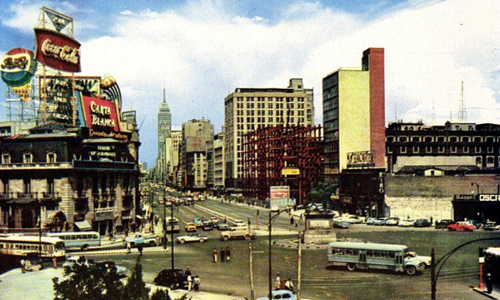
Meanwhile, there in the boutique, my poor father was bored to death. He started talking with the owner, who happened to be an American woman. As he got deeper into the conversation, he couldn't resist bragging to her about his daughter having just completed her master's degree in library and information science. The boutique owner exclaimed that her brother was looking for someone with a master's degree in library science. He was having trouble finding such a person because the universities in Mexico offered only a bachelor's degree in librarianship. He had been told by the president of the university where he worked that he had to find someone with a master's degree. My father became quite interested in this opportunity and wrote down her brother's contact information.
After we left the boutique, my father shared what he had gleaned from the
owner. Her brother worked at the University of the Americas, an international university in Cholula in the state of Puebla. I got out my maps and found that Cholula was basically a suburb of the big city of Puebla. It just so happened that we had planned on going to Puebla the next day. It must have been karma!

Cholula
***
Cholula is an exotic town very close to the nearby mountains Popocatépetl and Iztaccíhuatl. It also has the largest pyramid known to exist in the world today. In the 70s there was very little excavation of the pyramid which was surmounted by a Catholic church erected there during the Spanish conquest. They say that the city of Cholula has 365 churches, either one for each day of the year or one for each pre-Hispanic temple that used to be there.
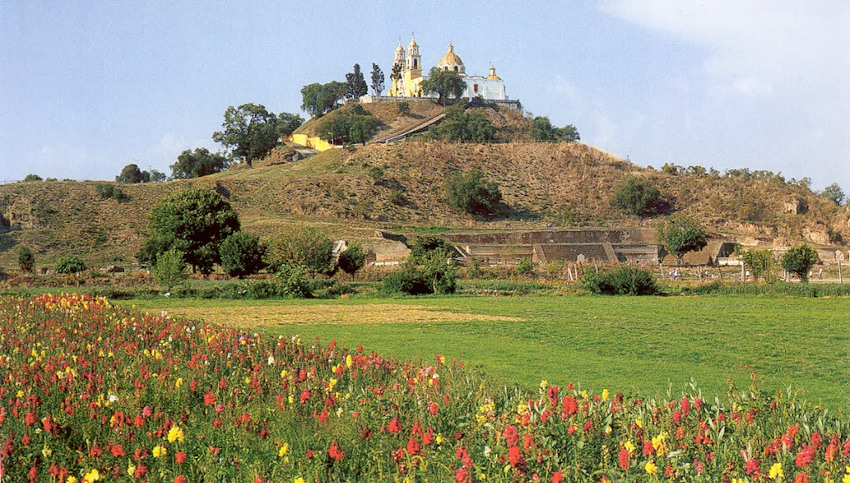
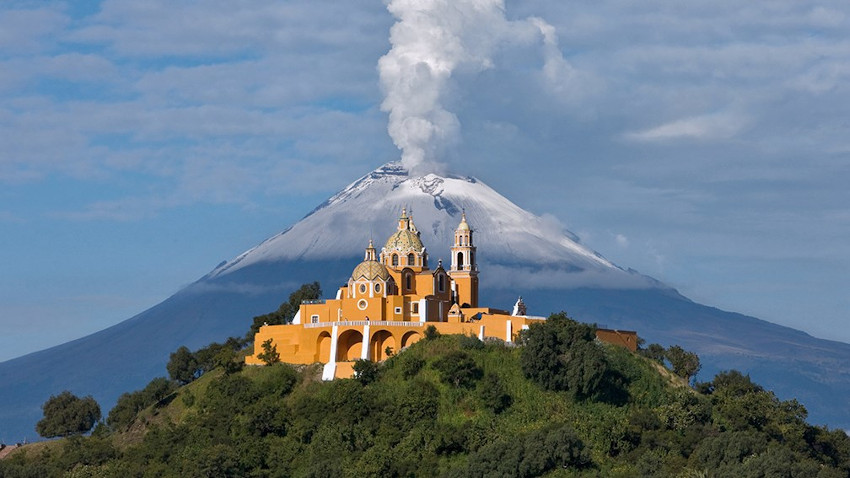
When we arrived in Puebla I called her brother, the Dean of Graduate Studies, and arranged an appointment for the following day. It was a very successful interview. He hired me on the spot.
We returned home to Canada, having visited lots of other exotic cities and towns around Mexico. As soon as we did I packed a few bags and flew right back to Mexico. I stayed for three years and had a fabulous time. I took every course in Spanish that the university offered and ended up with a bachelor's degree in the subject.
In the fall of 1971, the University officials decided to give all the students and faculty typhoid booster shots. They seemed to have information that a typhoid outbreak was coming. I thought at the time that it was all a bit ridiculous because the typhoid vaccine I had had in Canada before I left was still up-to-date. Nevertheless I agreed to the series of three injections.
One day in the spring of 1972 I started to feel a bit strange and went to see a doctor at the IMSS clinic. It turned out that I had typhoid fever. How could that be? I had had all the shots a person could have. The doctor informed me that I had Type "H" strain and it was a brand-new strain, never before seen. That explained why the typhoid vaccine had not protected me.
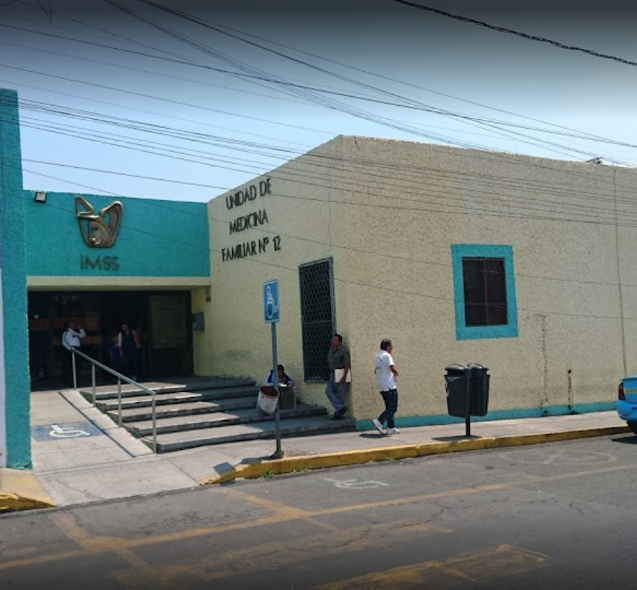
The hospitals were totally filled. There was no room for any more patients. I had to go to the IMSS clinic every day to be treated. It was so crowded you could barely find a seat to sit on. There was no "social distancing" nor masks, no mention of a quarantine. I saw with my own eyes a lot of sick people, right up close.
Every day I had a blood test at the IMSS clinic to see how the typhoid was progressing. The strain of the typhoid bacterium causing the epidemic had mysteriously become resistant to chloramphenicol, the drug generally used to treat typhoid. The doctors tried the few antibiotics that worked for this strain of typhoid on me and I had very bad side effects from all of them. I wasn't able to take the tablets, but when they tried giving me injections of the antibiotics, I was OK. My landlady knew a woman in our small colonia who gave injections. She started coming every day to inject me. I still remember the old metal hypodermic that she used each day. It sure hurt. After a few days I had large, sore bruises on both sides of my bottom. No matter, she just kept on giving me injections through the bruises.
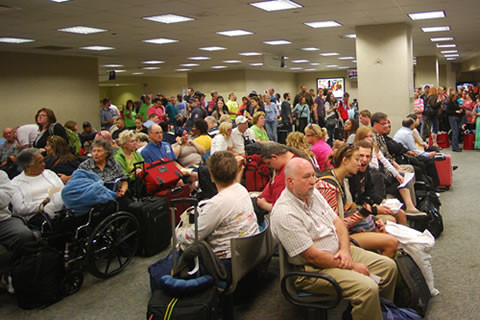
One day, having actually found a seat, I was waiting at IMSS to see a doctor. The young woman beside me started chatting. When she asked me which strain of typhoid I had, I replied Type "H." She cried out that she had Type "H" too. Suddenly we were bonded like sisters.
Another day I told the doctor at IMMS that my stomach was swollen and sore. He told me to lie down on his examination table and he began to examine my abdomen. Immediately he appeared amazed and saying that he would be back in a moment, raced out of the office. Two minutes later he came back with 5 other doctors in tow. They all politely asked to examine my abdomen. I figured, if I needed all those doctors, I must be in terrible shape. After they had all examined my abdomen, they all exclaimed, "¡Qué blanco!" I'm a redhead and I have very pale skin. When I realized they were all just looking at the colour of my skin, I was quite angry, but could do nothing in my pathetic state of health. My stomach eventually returned to its normal condition.
Other than that, the health care that I had in Cholula was excellent. I couldn't believe how caring the doctors and nurses were. One day it was standing room only at the IMSS and I was waiting to see a doctor. Suddenly I felt weak and faint. Just when I thought I was going to keel over, a woman appeared beside me and told me she was a doctor. She supported me and led me into her office. I beat the system of long waits by almost fainting. My landlady cooked meals for me as I lay in bed recovering. My boss at the library appeared on my doorstep from time to time to see how I was and when I was coming back to work. I can only say that Mexicans were as warm, caring, and helpful back then as they are now.
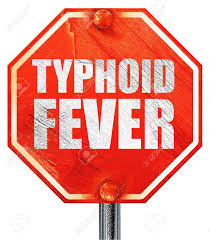
My dog caught typhoid, I guess from me. When the veterinarian arrived at our home to treat him, I noticed that his face was beet-red. When I asked him what the problem was, he replied that he had typhoid. It was everywhere! I was really jealous of my dog because he was sick for only about three days. I finally recovered after about five weeks.
I stayed and worked in the library at the Universidad de las Américas for another year. In 1973 I returned to Canada and took a similar job in the library at the University of Alberta. How about that -- from one U. of A. to another! I worked there for a few years and then taught library science at a college for almost twenty years.
I returned to Mexico after twenty-five years, this time to San Miguel de Allende. There's no typhoid now, just Covid19.
One big difference between the epidemic then and the pandemic now was that in the 70s no one thought of "self-isolating." Nor do I remember seeing face masks. The ordinary person in the street certainly didn't think of wearing a mask. No one stayed home. Everyone who wasn't sick continued to work. I went right back to work as soon as I could and never thought of quarantining. I don't remember that the economy suffered much because everything carried right on. Another difference was that the typhoid epidemic wasn't world-wide. It was only in Mexico and only in four states of Mexico. I was just "lucky" enough to be living one of the states that had it.

Universidad de las Américas
***
In contrast to today's Covid-19 pandemic, I would observe regarding the typhoid epidemic that we had no idea what was going on or how widespread it was. Electronic communication in Cholula in the early 70s was almost non-existent. There were no telephone lines into the colonia where I lived.
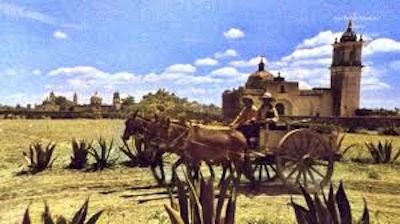
Cholula
***
Of course, in 1972 we had no internet, no email, Facebook or Civil List. But also, most people didn't even have TV. I did have TV, but I could receive only three channels and none of those were a news channel. Well, of course, in 1972 there were no news channels. What I mean is that none of those three channels had any news. No one really knew what was happening. I didn't find out how serious and large the typhoid epidemic was until I started doing research for this article.
There is a New York Times article, written in 1972, that states: "Public Health Service officials said yesterday that the epidemic of typhoid fever that has spread through four central states of Mexico since last January was the largest in the world in several decades. Accurate statistics on the number of cases and deaths in the Mexico epidemic are not available. Reliable observers have estimated that several thousand cases have occurred in the four states—Hidalgo, Tlaxcala, Mexico and Puebla—in 1972... Dr. Gangarosa, an expert in typhoid, said he could not recall when the last epidemic of similar magnitude occurred."
**************
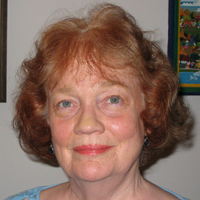
Pat Hall is a retired Canadian who has been visiting San Miguel for the past 22 years. Many years ago Pat worked in the library at the Universidad de las Américas in Cholula, Puebla for three years where she also studied Spanish. In Canada she worked as a librarian, library science instructor, and language teacher (French, Spanish, German, Latin, and English as a Second Language). The last 10 years of her working life were spent as a translator, translating official documents from Spanish to English and from English to Spanish. She has recently published a book, Speak To Me: Travels and Exploits of a Language Lover, available on Amazon, about her adventures traveling and pursuing her passion for languages.
